Z77 mITX Round-Up: Five of the Best – MSI, Zotac, ASRock, EVGA and ASUS
by Ian Cutress on December 31, 2012 7:00 AM EST- Posted in
- Motherboards
- MSI
- ASRock
- EVGA
- ZOTAC
- Asus
- Ivy Bridge
- Z77
- mITX
ASRock Z77E-ITX BIOS
As already mentioned in the overview to the Z77E-ITX, its BIOS is a step back from the most recent implementations of the BIOS we have seen on the X79 Extreme11 and FM2A85X Extreme6 – instead of that starry background we get the older blue on white indicative of the earlier Z77 products. This is mostly likely due to the mid-2012 release of this motherboard, but going through the history of the ASRock BIOS, there is an evolution taking place:
ASRock H67M-GE/HT
ASRock Z77E-ITX
ASRock X79 Extreme11
Despite the evolution, ASRock have kept the general design constant. This means information like the motherboard model, BIOS version, processor installed, processor speed, memory installed and memory speed are right there on the front menu – useful for anyone wanting this information without loading an OS or opening up the case. All that is missing is perhaps the CPU temperature and CPU fan speeds. If this was all wrapped up in an aesthetic and interactive scenario we would be on to a winner.
With the Z77E-ITX BIOS, the Main screen has access to two functions – the System Browser and the Online Management Guard.
The System Browser shows the motherboard with all the changeable ports highlighted. By rolling the mouse over each of them, it will tell the user what it detects in that port. Thus if a SATA device suddenly stops working, users can check this to make sure the BIOS still recognizes it.
The Online Management Guard is an interesting way to get around the ‘how to keep the kids off the internet when they should be doing schoolwork’ issue – users can select hours of the day at which the network controller will be disabled. Unfortunately the system is easily disabled by going back into the BIOS and either changing the BIOS clock or changing the OMG setup itself. Yes, OMG is an odd name for this feature – “OMG, it’s so easy to disable!”
The main bulk of the options are found in the OC Tweaker menu:
The OC Tweaker menu is arranged into lists of features relating to separate parts of the system. First is the CPU configuration, relating to CPU ratio, BCLK and power limitations. We also have overclocking support for the integrated graphics. Underneath this is the DRAM timing options, which give XMP support or a manual adjustment of the timing ratios. The voltages are further down, and we are given Load Line Calibration options as well with diagrams to show how LLC varies with ‘Level’. Finally there are options to save the current settings for future usage.
The Advanced menu deals with the non-overclocking options: we have access to our SATA/USB configurations, as well as the extra controllers on board and the NB/SB options. In order to flash the BIOS via USB or the Internet, the options are in this menu.
The fan settings are found in the H/W Monitor option along the top, and in keeping with previous ASRock motherboards, the fans are set to 100% by default. This is by no means the best way of presenting the motherboard out of the box, resulting in high noise levels unless the options are changed. The fan options on the Z77E-ITX allow for both fans to have a ‘maximum’ temperature after which the fans are on full, and a target fan speed which sets the fans to that speed below the target temperature.
Elsewhere in the BIOS are boot options and security options. Annoyingly missing is a boot override function, useful for those one-off USB installation scenarios.


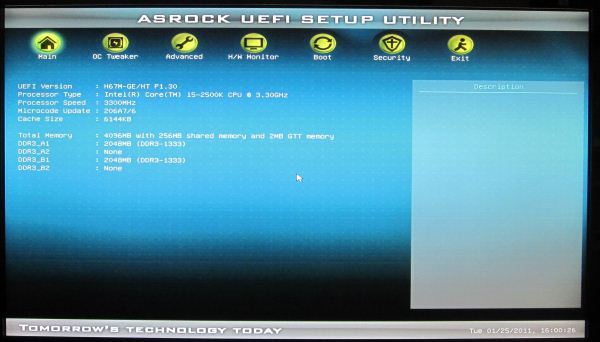

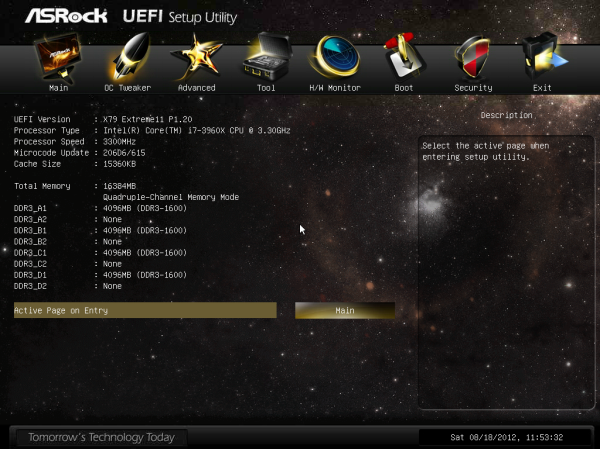
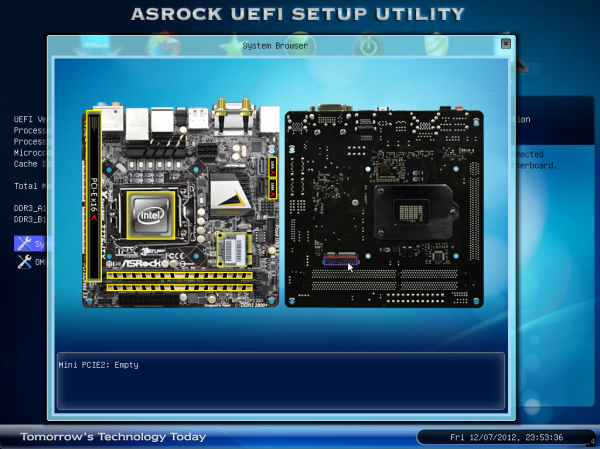

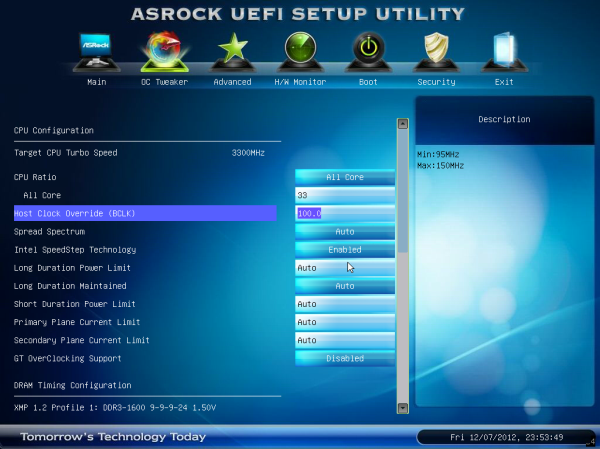
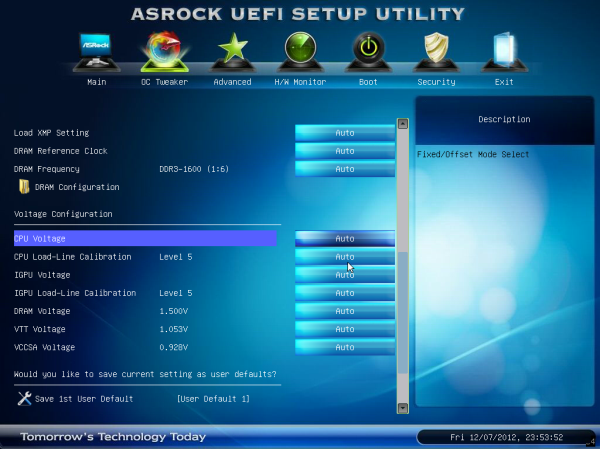
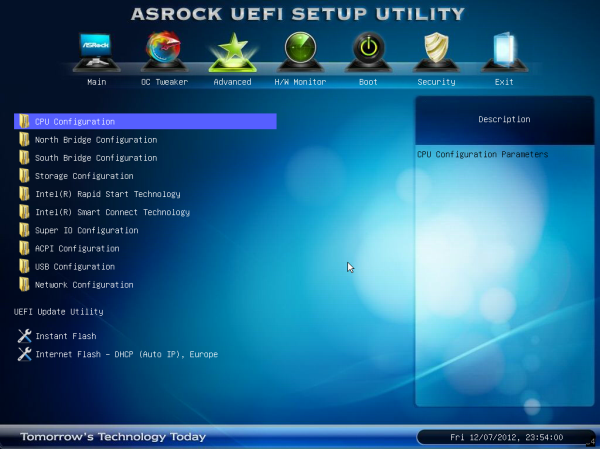
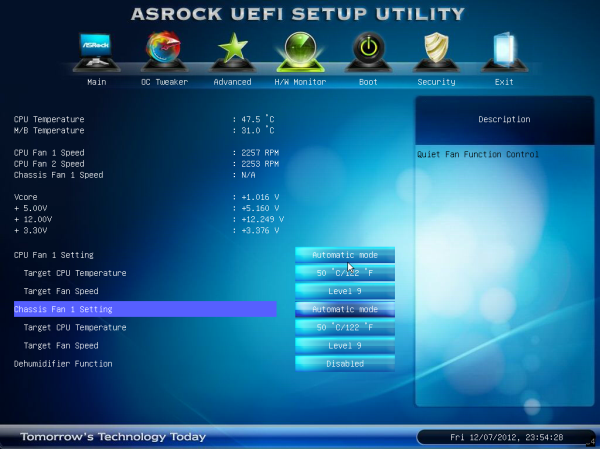














54 Comments
View All Comments
ryedizzel - Monday, December 31, 2012 - link
Thank you so much for this Z77 roundup as I'm currently shopping for a new mobo and have been piecing together reviews from various sites. But as usual I always check here first, then Tom's, then Hardocp (in that order). Keep up the great work in 2013!Aikouka - Monday, December 31, 2012 - link
Ah, if only I held off on building my silent HTPC for a little bit longer. The hardest part about working with a Streacom case (other than building it) is finding a good motherboard that doesn't put too much in the way of the heat pipes. That's one reason why I was considering going with a board with mSATA, and I'm pretty certain that I stumbled across that ASRock board. Unfortunately, I looked at the photos, and didn't see a mSATA port, so I passed on it. Who would have thought to look at the back? Boy, do I feel like a bit of a dummy now! =$Although, speaking of the back mSATA connector, I recall seeing you touch on it on the recommendation page, but do you think it would work well on most cases? If I remember correctly, mSATA drives are fairly thin, so it might be fine. Going back to the Streacom, it does look like the ASRock offering would work well in regard to clearance even disregarding the mSATA port as the light gray SATA ports should clear the heat pipes. The USB3 port won't though.
philipma1957 - Monday, December 31, 2012 - link
I built 2 asrock builds with the msata as the only drive. btw this z77 review with no regard to oc is pretty weird.I have a 3770k with a hd7970 gpu and an msata in a small case the cooler master elite it is a very fast powerful machine. I use the asrock and love it. it does have a flaw the msata slot is sata II
Ananke - Monday, December 31, 2012 - link
I have i3-3225 (the same as in the article). In my opinion, for the money, the best is ASUS P8H77-I.It does have 6 SATA ports - a must for a file server. So, basically install Windows 8 on a SSD, add HDDs and create Storage Space - 5 SATA will allow you to create software RAID 5, without the need of SATA extension controller. BIOS is nice and stable. The board is $100 on Newegg.
The ASUS Z77 Deluxe is nice, if anybody needs all the additional functionality in a small form factor. However, only 4 SATA - means no good for video, file, backup server. You get the "overclocking" ability though. I doubt how practical is overclocking into so small space, probably to a handful of people. Teh board costs $185.
So, I would say $100 is better than $185, plus you get all the 6 SATA ports - priceless.
DarkStryke - Monday, December 31, 2012 - link
Not everyone who games wants to have a huge tower. I've built more then one system based around the silverstone FT03-mini that runs a 3750k / Z77 deluxe-i and a GTX 670.I bring mine to lan parties and people are amazed at the power in such a small box, and it's just as fast as any desktop single GPU alternative.
Ananke - Monday, December 31, 2012 - link
ASUS P8H77-I is a mini ITX board - the cheaper variant of the reviewed deluxe board. It costs $100.ggathagan - Wednesday, January 2, 2013 - link
I agree; the H77 makes much more sense for most ITX builds.I built a system with the P8H77-I, a GTX670 and the FT03-MINI.
I don't think the daughter card of the Z77 Deluxe would have fit in the case.
tramways - Monday, December 31, 2012 - link
I registered here because the reviewer is lamenting that some boards use the ALC889 instead of the ALC892 codecs.The 889 like the 882 before it and the 898 after it is a much better codec than the 892.
The 883,888,892 codecs are the cheaper low performance DAC/ADC chips.
I would buy a board with the ALC889 or preferably the ALC898,but not with the ALC892.
all the best in 2013
Paul
limki - Monday, December 31, 2012 - link
too bad I already ordered mine last week ... MSI Z77IAto tell the truth, i don't really mind [ at 136€ its a bit pricier than asrock with my supplier]
the conclusion for this board seems a bit biased to me
but hey, if you're not looking for a tiny powerhouse, you don't need z77
- in SUGO 05(and most small cases), MB is horizontally and PSU is above it, so cables and airflow will always be nasty
- using a discrete GPU, you don't care about not having DVI or DP
- no additional controller (USB/SATA) -> I don't plan on using more than 2(won't fit into case), so why bother?
//btw is the SATA 6/3/m correct 2+2? shouldn't be also 2+2+1?
- and if I'm to take the "military grade" stuff at least half seriously, ...
EnzoFX - Monday, December 31, 2012 - link
Do the post times include those pesky AHCI driver loading screen? I hate that it adds so much more to the boot process.